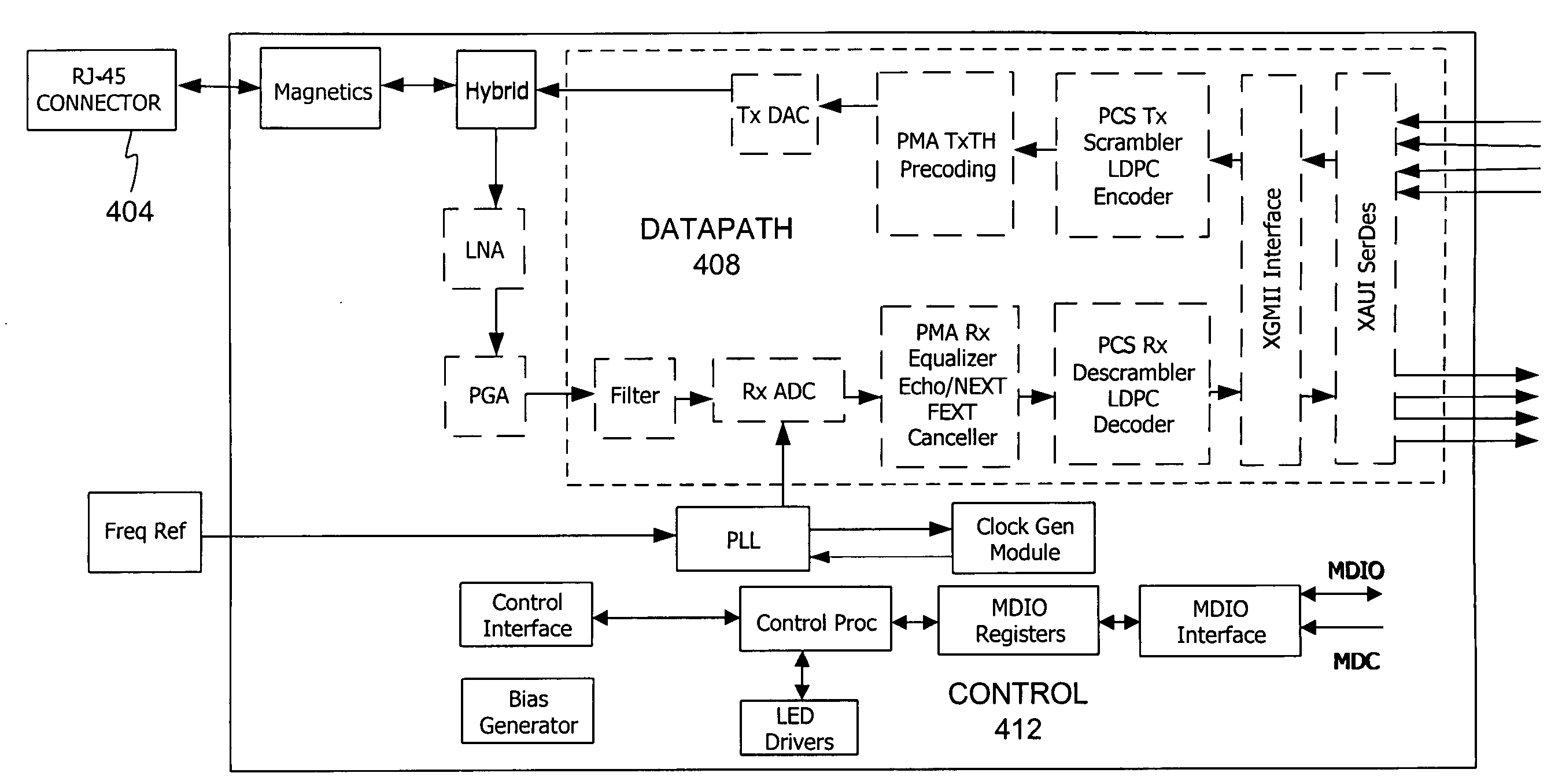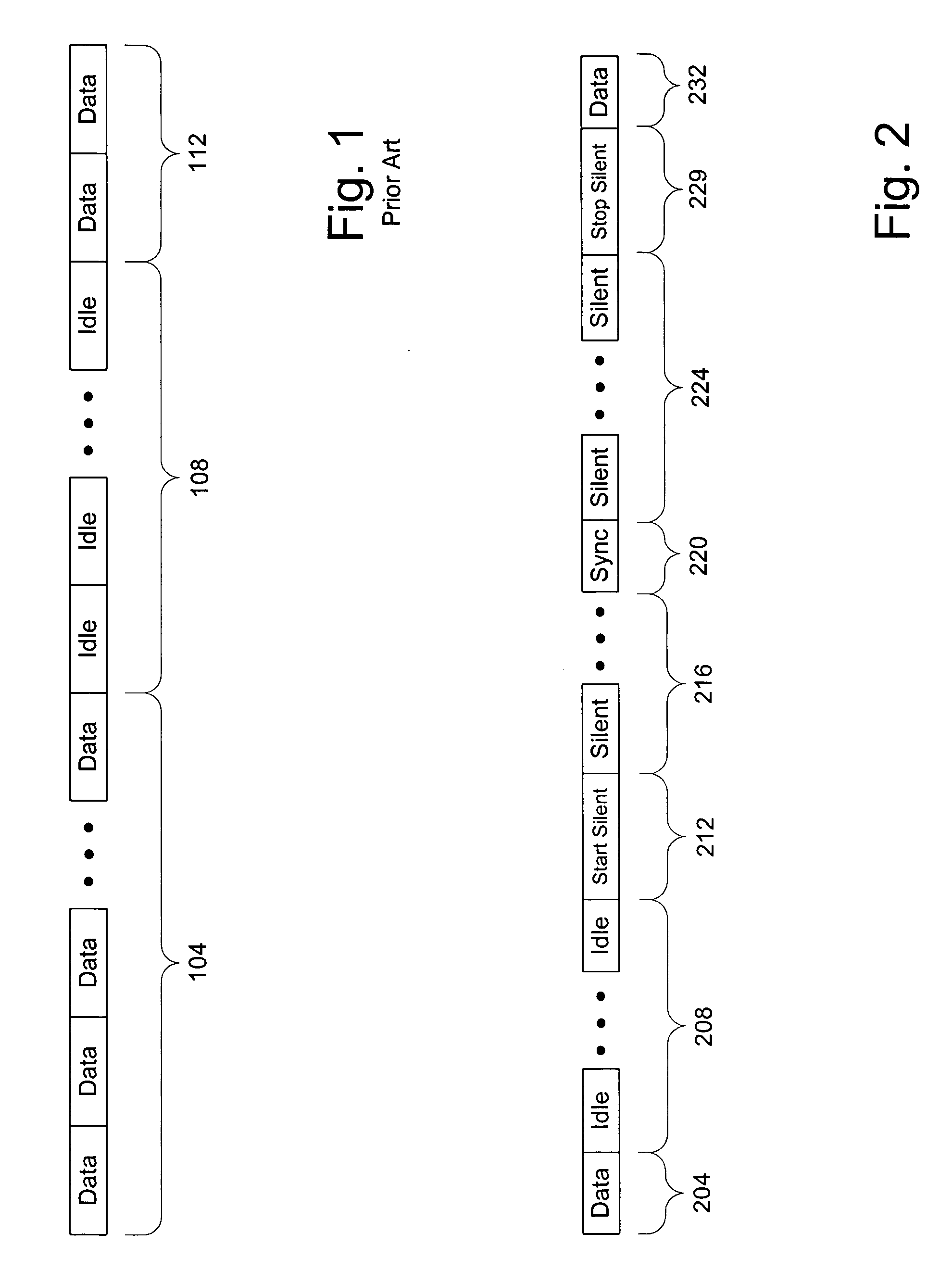Active idle communication system
a communication system and idle technology, applied in the field of data communication, can solve the problems of large power consumption of primary power consumption, large power consumption of active operation of transmitter, receiver processing elements, and receiver processing elements, and achieve the effect of saving power
- Summary
- Abstract
- Description
- Claims
- Application Information
AI Technical Summary
Benefits of technology
Problems solved by technology
Method used
Image
Examples
Embodiment Construction
[0022]FIG. 1 illustrates a prior art frame stream. In this prior art frame stream, during periods when data is not transmitted, idle frames are transmitted to maintain the communication device synchronization and equalizers. Data is defined herein as user information which is transmitted between communication devices for higher level application levels. Idle frames are digital content sent during periods when data is not sent, such as when the communication device is not in use by a user.
[0023]During a frame sequence 104 a user or the communication device is utilizing the communication channel for the exchange of data. As such, data is being transmitted and receive by opposing transceivers and the communication system is functioning as desired to perform data communication. Thereafter, during a frame sequence 108, the communication devices stop transmitting data and become idle. During idle periods, idle frames, containing scrambled 1's and 0's are transmitted between stations and p...
PUM
 Login to View More
Login to View More Abstract
Description
Claims
Application Information
 Login to View More
Login to View More - R&D
- Intellectual Property
- Life Sciences
- Materials
- Tech Scout
- Unparalleled Data Quality
- Higher Quality Content
- 60% Fewer Hallucinations
Browse by: Latest US Patents, China's latest patents, Technical Efficacy Thesaurus, Application Domain, Technology Topic, Popular Technical Reports.
© 2025 PatSnap. All rights reserved.Legal|Privacy policy|Modern Slavery Act Transparency Statement|Sitemap|About US| Contact US: help@patsnap.com



